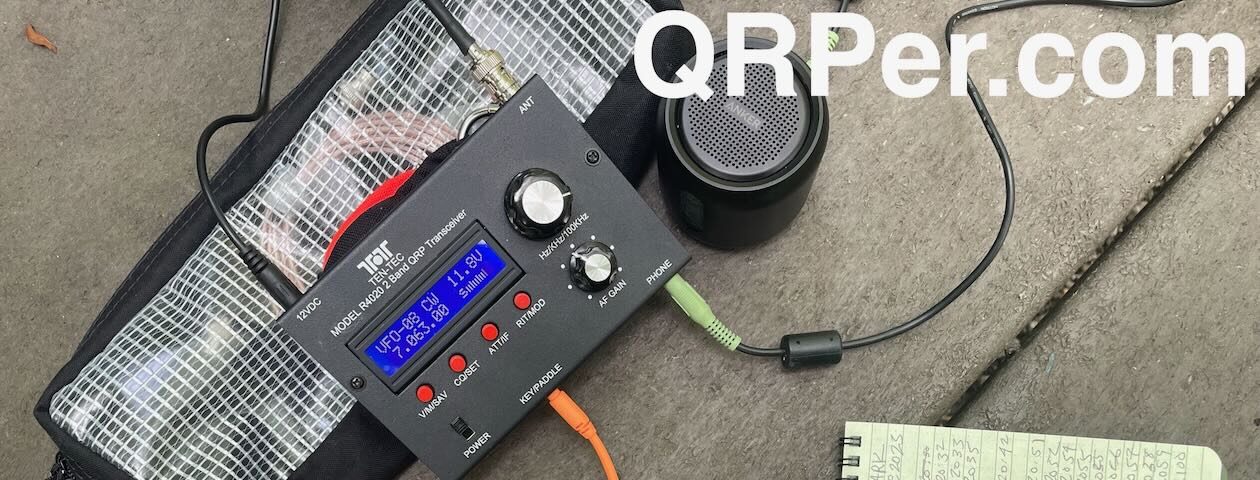
A reader asked this morning:
“[W]hat’s the toughest HF QRP transceiver on the market? I want a rig with good field performance and features, but I what I really want is something rugged…something that might survive falling off a rock or log while I’m doing a little SOTA.”
It was a no-brainer to me: either the lab599 Discovery TX-500 or Yaesu FT-818/817.
I feel lucky in that I’ve acquired a number of excellent QRP transceivers over the years. Most of my field-worthy radios are acceptably rugged, but the TX-500 and the FT-818/817 really stand out.
The Discovery TX-500
 The Discovery TX-500 was designed from the ground up to be a rugged, weather-resistant portable radio that could operate in challenging environments (think the extremes of Russia where it’s manufactured).
The Discovery TX-500 was designed from the ground up to be a rugged, weather-resistant portable radio that could operate in challenging environments (think the extremes of Russia where it’s manufactured).
If I’m heading outdoors and it could rain or snow? I’ll be grabbing the TX-500 for sure. It’s a brilliant portable radio
Yaesu FT-818 or FT-817

While the Yaesu FT-818/817 has no serious weather-proofing, it does have an incredible study chassis like the TX-500 and was obviously designed for outdoor use. Both of my FT-817NDs have side rails and with those in place, I really feel like it would easily survive falling off a rock or log. In addition, I’ve heard stories of the FT-817 surviving some hard falls–that goes a long way for me. No doubt, it’s a study little rig!
The X5105: A close runner up?
 I’ll admit that the Xiegu X5105 feels like a very study radio as well. The chassis is made of an aluminum alloy and feels rigid. Mine has a polycarbonate screen protector. I also like the fact that its buttons and the main encoder are all low-profile. It’s still pretty new to me, but it’s obvious Xiegu designed the X5105 to be rugged. If it fell off a rock during a SOTA activation, I wouldn’t worry too much.
I’ll admit that the Xiegu X5105 feels like a very study radio as well. The chassis is made of an aluminum alloy and feels rigid. Mine has a polycarbonate screen protector. I also like the fact that its buttons and the main encoder are all low-profile. It’s still pretty new to me, but it’s obvious Xiegu designed the X5105 to be rugged. If it fell off a rock during a SOTA activation, I wouldn’t worry too much.
Admittedly, I feel like the X5105 wouldn’t be terribly weather-resistant–the buttons are somewhat recessed and the button openings are quite large, likely allowing water intrusion. Of course, I haven’t cracked mine open yet (it’s still under warranty and is sealed), so I’m assuming there’s no effort to stop water intrusion internally.
Do you need a “rugged” transceiver?
That’s up to you.
One of my favorite portable transceivers is the Elecraft KX2. I’ve taken it everywhere. I’ve dropped it, it’s rolled off my clipboard, I’ve got caught in the rain with it, and I’ve even slid and fallen on my backpack when it was stored inside. I wouldn’t classify the KX2 as a “rugged” transceiver, yet it’s survived all of this without even sporting side rails (like its bigger brother, the KX3).

At the end of the day, if you like to operate in extreme conditions, put ruggedness at the top of your priority list. Otherwise, simply protect your transceiver in transport with a good waterproof case or padded/waterproof pack. If you’re worried about rain or water, bring a rain jacket or portable fly/canopy to protect you and your rig during operation.
Did I miss something?
What radios do you consider to be some of the most rugged on the market? I’m certain I’m overlooking some. First hand experience would be most welcome! Please comment!

































